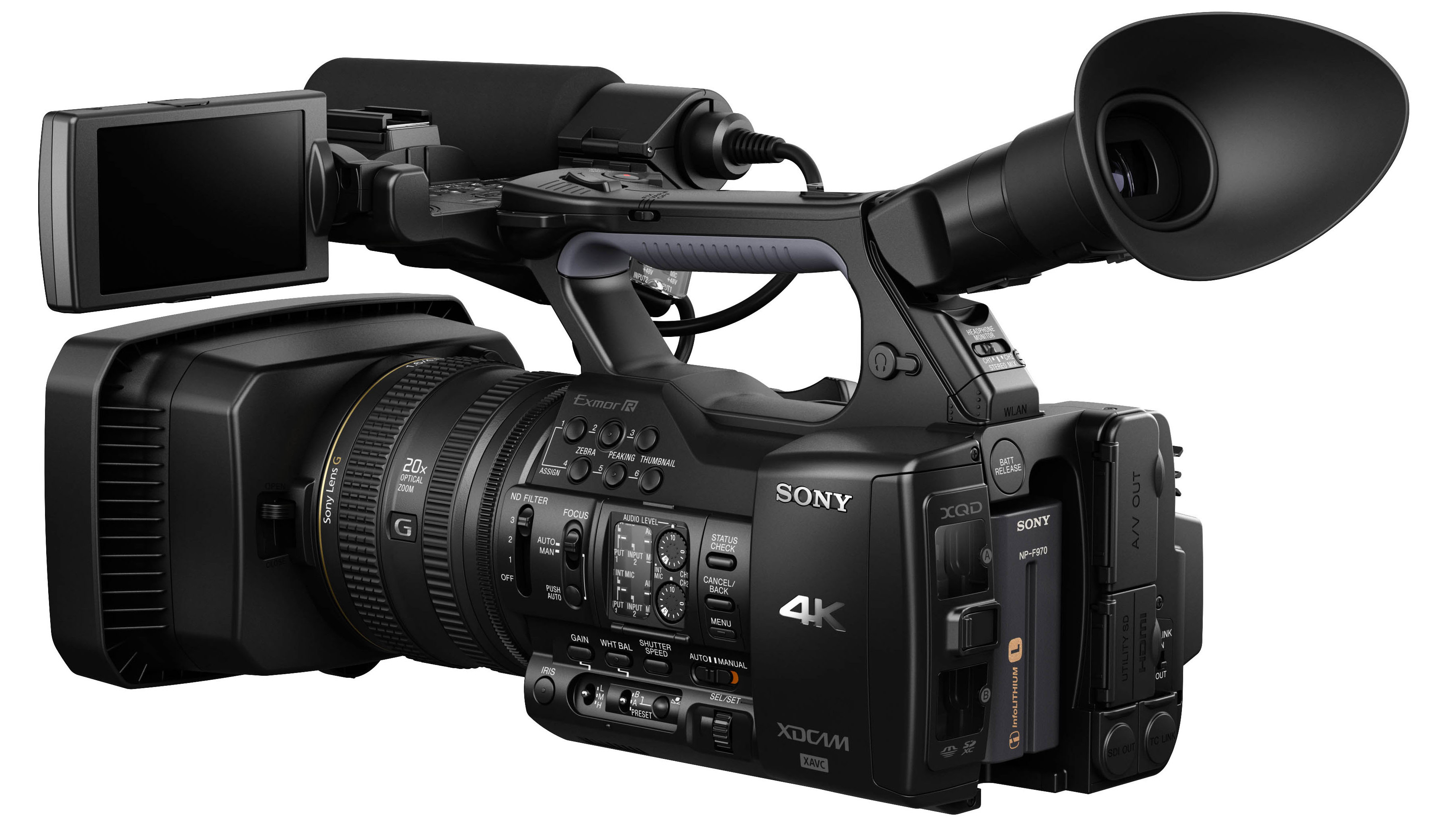 Back to selection
Back to selection
Sony Announces PXW-Z100, Ushers Era of 4K Camcorder

Sony announced today at the IFA consumer electronics show in Berlin a new line of 4K camcorders, available this fall. The pro version will be called PXW-Z100, while the “consumer” version will be called FDR-AX1.
Bucking the large-sensor trend I described recently in Filmmaker, the PXW-Z100 (from this point, I’ll detail the pro version only) contains a single 1/2.3-in. Exmor R CMOS sensor, a smidgen less than full half-inch.
At first glance above, the PXW-Z100 would seem to do for 4K what Sony’s epochal HVR-Z1 did for HD almost a decade ago: introduce affordable capture of the latest high-res format in a compact, hand-held camcorder with professional features.
How affordable? Street price for the PXW-Z100 could drop to $5500.
In the case of the Z1, the key was highly compressed 8-bit, 4:2:0, Long-GOP HDV recorded to existing MiniDV tapes. In a word, MPEG-2. This time it’s different.
In the PXW-Z100, 4K is captured to 10-bit, 4:2:2, intraframe XAVC, the same internal codec found in the F5 and F55. (Highest possible level of H.264/MPEG-4 AVC.) As in those cameras, both 4096 x 2160 (Cinema 4K) and 3840 x 2160 (Ultra HD) are supported. Up to 60 fps in the Z100. Which, if you’re shooting 23.98p, enables 2.5x slo-mo.
The Z100 records XAVC to a new type of solid-state, super-fast media called XQD, developed by Sony, Nikon, and SanDisk to supersede the 16-year-old CompactFlash standard. It resembles a narrower CF card. Blazing speed is needed because even with XAVC compression, 4K at 23.98p generates 240Mbps, while 60p can top 600Mbps! (Because of this, the consumer FDR-AX1 records 3840 x 2160 only, using 4:2:0, Long-GOP “XAVC-S” at lower bit rates.)
Two XQD slots offer relay recording or mirroring.
As I’ve written many times, 4K cameras make the best HD cameras due to oversampling. The Z100 records HD, like 4K, to intraframe XAVC – meaning 10-bit, 4:2:2, and downconverted from 4K, no less. A future firmware upgrade will add the economical, Long-GOP XAVC-S codec, borrowed from the FDR-AX1 to permit longer recordings of Ultra HD and HD. All Z100 files are “wrapped” using the MXF standard.
Output includes a single 3G-SDI connection as well as HDMI 2.0 – a spanking new HDMI standard coincidentally also introduced today – which can output 4K up to 60p via a single cable.
Intriguingly, the Z100 invites Wi-Fi control of iris, focus, zoom, and recording using any Internet browser via smart phone or tablet.
This isn’t a review — I’ve seen only a prototype Z100 — so I’ll stop here. But this camcorder looks and feels comfortably familiar. It’s about 6.5 lbs., with a fixed 20x Sony-designed “G lens” zoom, optical image stabilization and three built-in NDs. It uses familiar L-series batteries found on pro Handycams since MiniDV days. At the side is a zoom rocker switch with one-touch auto-iris up front and a button for focus magnification in back, under the index finger.
The only difference you might notice is the soft constant whir of a small fan at the rear, opposite the operator. 600Mbps is a lot of processing.
For the record, JVC introduced the first hand-held 4K camcorder, their GY-HMQ10, over a year ago at NAB 2012, but it doesn’t count. Nobody was ever going to shoot serious Ultra HD on four SD cards at a time. Imagine misplacing one of the four. Getting some version of “this card is unreadable” upon backup. The thought alone of backing up four times as many cards!
